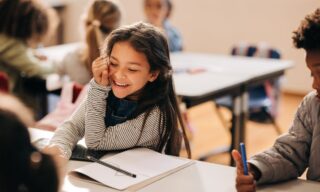Facing Financial Constraints, LAUSD Must Rethink Priorities
Julie Slayton & John Pascarella | December 3, 2024
Your donation will help us produce journalism like this. Please give today.

The Los Angeles Unified School District was able to avoid the hard choices that many districts around the state had to make in the 2024–25 budget year. They experienced only a 2% budget reduction and did not have to lay off personnel. This may have been in part because LAUSD was able to rely on COVID relief reimbursements where other districts were not so lucky.
The 2025–26 budget year might be a different story. It is too early to tell.
Governor Gavin Newsom has made every effort to keep school budgets stable, redirecting general fund dollars from other important social programs to schools.
According to the California Budget and Policy Center, the 2024–25 state budget protected funding for transitional kindergarten, PreK–12 schools, and community colleges, despite revenue shortfalls.
But unless the long-term budget picture changes for the state, it is likely that more significant budget reductions are coming to LAUSD. In addition, as the district continues to see declining student enrollment, there will be fewer dollars coming to the district in future years.
Given this likelihood, it is important to ask what LAUSD should do when faced with serious budget cuts. Should it protect the programs it has in place? Should it prioritize some programs over others? Should it protect teachers and reduce the central administration? The district has directed millions of dollars to student learning initiatives and teacher development efforts. Are these initiatives and efforts worth protecting?
These questions could be answered by data, but the district no longer conducts large-scale program evaluation studies that allowed officials to better understand connections between funded initiatives and student learning outcomes. As a result, there is no evidence any of these initiatives or efforts are directly responsible for any recent improvements to learning outcomes. Increased student achievement could simply be related to the fact that attendance rates have dramatically improved dramatically over the past three years. More time in school, more opportunity to learn.
What if the answer is not going to be found by looking at specific initiatives? Two major approaches have been taken to improving schools and students’ learning opportunities. The first is district reorganization. LAUSD has undergone multiple reformulations, all intended to move oversight and support closer to the classroom. None of these efforts have accomplished their stated goal. The second is sending more resources to the school sites and providing teachers, and sometimes administrators, with more training. These initiatives have borne some fruit but have not substantially boosted teaching and learning.
As LAUSD anticipates more significant budget reductions, the district should rethink how it meets the challenge of achieving its vision while addressing the challenges of its fiscal limitations. If the district holds onto programs and positions where it has evidence that they are proven to increase learning opportunities, it might be able to make changes adaptive to the new fiscal climate. Conversely, decisions to eliminate initiatives and roles with little or no known proven impact on learning could also prove adaptive. However, both require the district investing greater time and effort in better understanding how programs and positions achieve these aims.
Moreover, the school board, the superintendent, UTLA, AALA, SEIU, parents, caregivers, and community organizations must find new ways to work together to thrive within these financial limitations. Without much evidence of impact, programs and roles that do not increase learning opportunities and decrease educational inequities must be reconsidered. Prioritizing what can be learned about the quality and impact of initiatives adopted to achieve these aims has the potential to increase public awareness, reduce costs, and redirect funds to higher impact programs. Doing so may upend political allegiances, but ultimately avail organizational changes necessary for meeting its responsibility to students and families in the district.
Finally, we believe the work of PreK–12 educators is the most important factor influencing learning opportunities in LAUSD classrooms. Without viewing educators as people actively learning and growing, the district will not sustain schools as places for students to flourish and thrive—no matter the budgetary constraints. To expand learning opportunities while navigating those constraints, the district must reevaluate policies, incentives, accountability structures, and professional development programs to determine whether those levers nourish the people making learning possible in their classrooms.
Julie Slayton, JD, PhD, is a Professor of Clinical Education in the USC Rossier School of Education and the Director of the USC Human Research Protection Program. Professor Slayton currently teaches courses in USC Rossier’s EdD in Educational Leadership in the Leading Instructional Change Concentration and research methods.She spent 10 years in LAUSD as a researcher and a member of two superintendents’ cabinets.
John Pascarella, PhD, is a Professor of Clinical Education in the USC Rossier School of Education and Chief Academic Officer of the USC Race and Equity Center. He is an expert in teacher education reform, racial equity, and digital media literacy. He is a former high school English teacher and former chair of USC Rossier’s Master of Art in Teaching (MAT) programs.